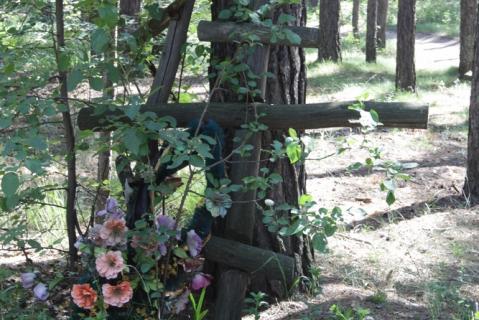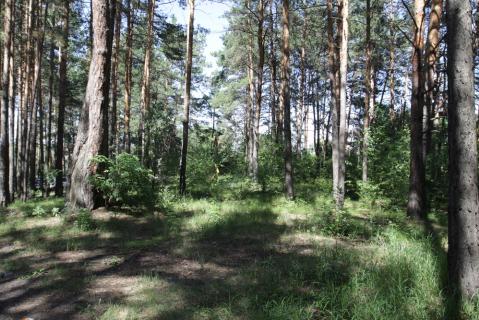In 1925, a prison was organised in the closed “Kazan Mother of God” Nunnery in Barnaul (81 Kanatny Drive). To this day the premises are occupied by the Altai Krai Penitentiary Service as detention centre No 1.
In the 1930s the prison was under the control of the NKVD. Local inhabitants knew that people were executed and buried in pits in the pine forest next to the former nunnery walls; periodically bones would surface there. S.M. Kobzev, who works at the Barnaul “City” museum, believes that those due to be executed were held in one of the former nunnery buildings before being led out into the forest through a gate in the wallto be shot.
In 1989, prompted by the latest finding of bones, student historians from various Barnaul institutes (Vladimir Ryzhkov, Valery Savinkov, Gennady Glyus and others) studied the area. Approximately 100 metres away from the prison wall no less than 20 burial pits were discovered. The total area was estimated visually to be 60 x 60 metres. Following a report about the discovery of these remains in the press the Barnaul Prosecutor’s Office opened an investigation. The prosecutors uncovered and exhumed the remains and drew up a plan of the burials. One of the participants Valery Savinkov recalls that subsidence with the appearance of trenches, about 20 metres in length, were clearly visible and bones were found as soon as digging began. No less than five of the pits were investigated. There are reports that 10-20 bags full of human bones were gathered and coins dating back to 1933 and 1935 were found in the pits. The first memorial, a wooden cross, was erected on the site.
In 1991 the remains were reburied in two common graves. Members of the “Search” student construction group carried out the work. They erected a stone on the site bearing the inscription “May the power of truth resurrect the slain innocents”, “May they never be forgotten”, and the first cross was retained. In autumn that year they planted a rowan tree next to the monument. Subsequently two more Orthodox crosses appeared next to the memorial; it is thought they were added by believers who visited the chapel below next to the spring.
The memorial has the status of a regional site of cultural heritage. Official ceremonies are not held there. Masses for the dead are regularly performed by the crosses. In spring 2001 fragments of three female skeletons were discovered there. The Barnaul diocese believes them to be the remains of nuns who were shot in the 1920s after the nunnery was closed.
The Memorial online database (2025) lists 46,525 victims in the Altai Region (Krai; BR 45,668). See NKVD courtyard.
15,028 were shot, most during the Great Terror (12,509). Charges were dropped in 3,219 cases, 194 having died in custody. Мore than 24,000 were held in the camps, where 425 died; about 2,400 were deported, including the families of over seven hundred men shot or sent to the camps.
In addition, the database includes 857 names from police records with very little information.
| Date | Nature of ceremonies | Organiser or responsible person | Participants | Frequency |
|---|---|---|---|---|
|
various
|
Office for the Dead and burial services
|
Russian Orthodox Church in Barnaul
|
priests, public
|
Regularly
|
| State of burials | Area | Boundaries |
|---|---|---|
|
Subsidence in the form of trenches, about 20 pits
|
3,600 sq m
|
delineated in places
|
[ original texts and hyperlinks ]
Materials of an expedition to the Altai Krai (2011) – archive of RIC Memorial (St Petersburg)
“Burials of those shot in Barnaul Prison”, The Virtual Museum of the Gulag [retrieved, 27 May 2022; not accessible]
*
Reply [1 p. 2 locations] of the Altai Krai Administration (No 12-223 of 7 April 2014) to a formal enquiry from RIC Memorial (St Petersburg)


